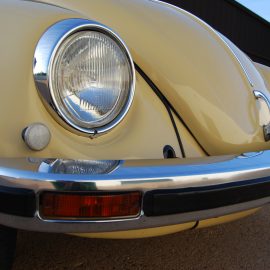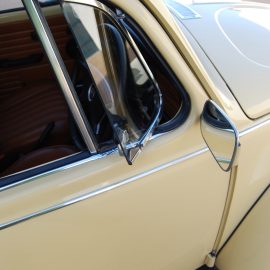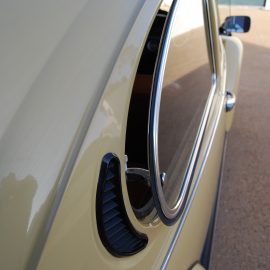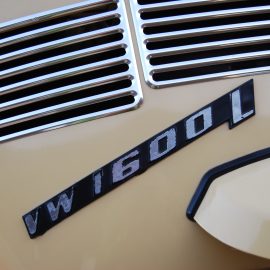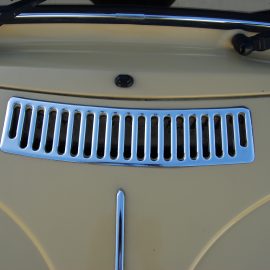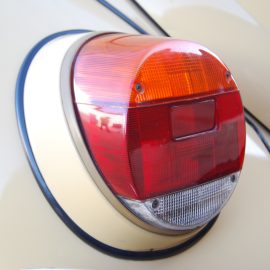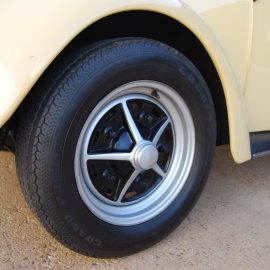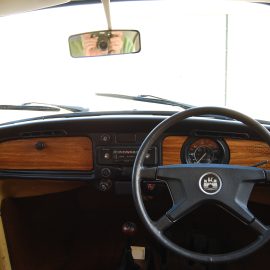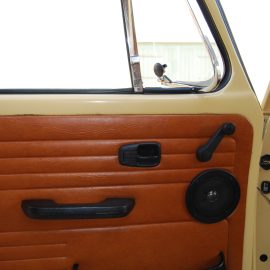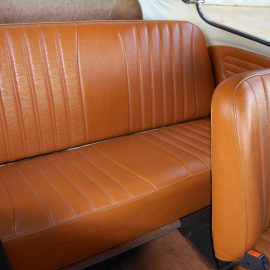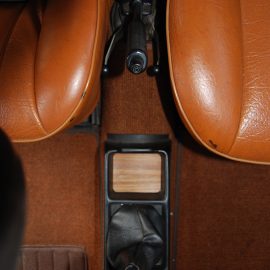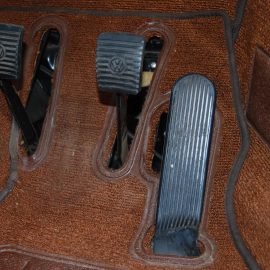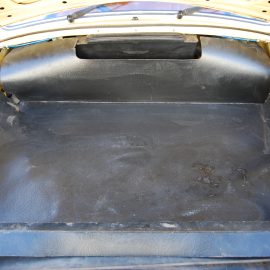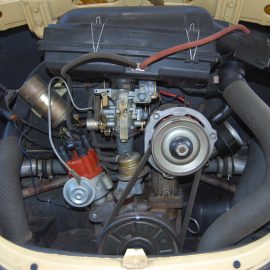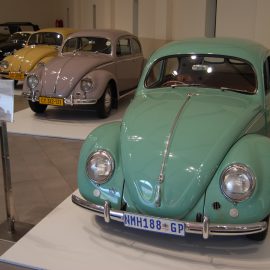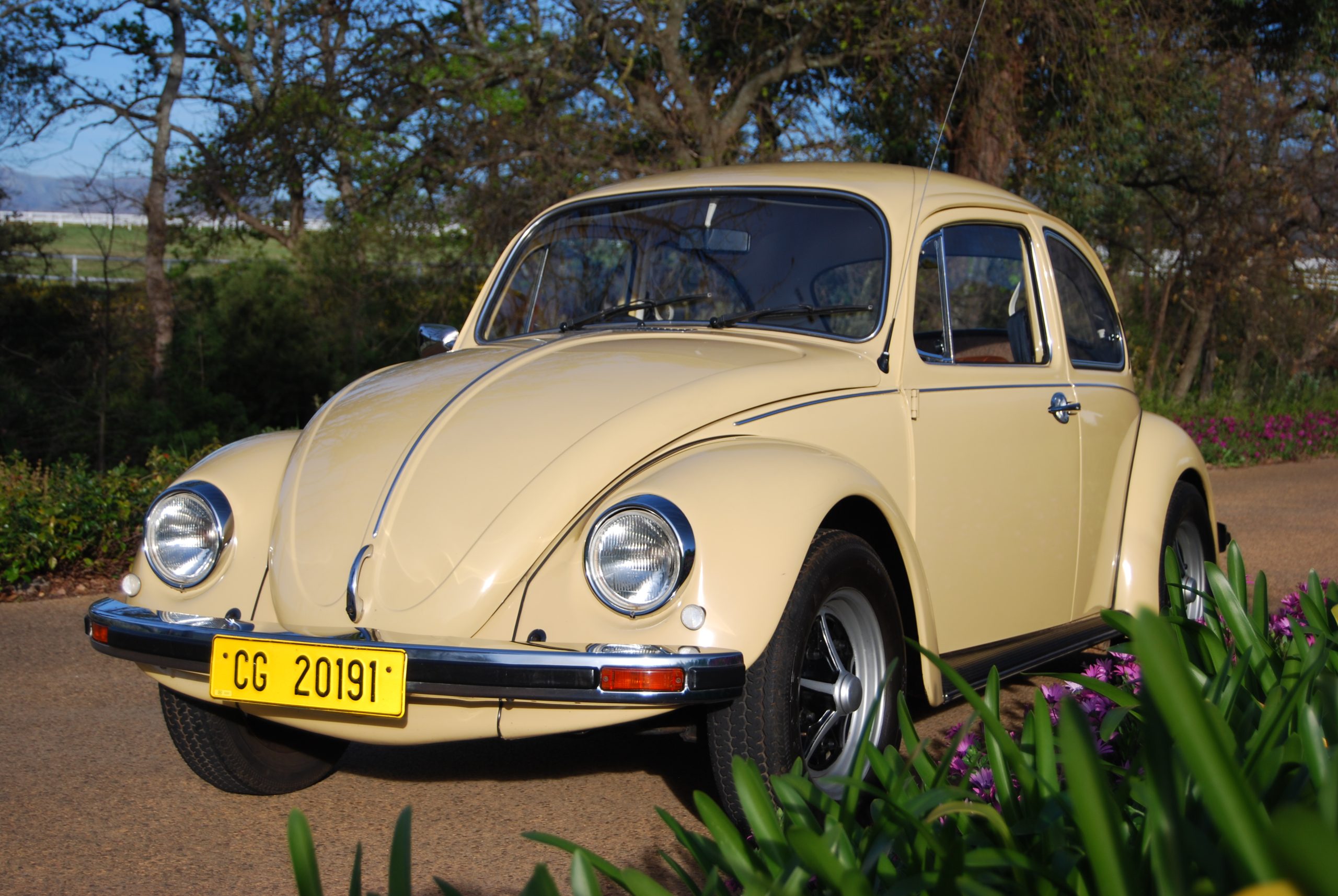
02 Oct Collection In Action: 1972 VW Beetle 1600L
In their heyday, Beetles never really appealed to me but nowadays I can better appreciate their contribution to motoring life. Mike Monk takes a light-hearted look back at Beetle mania, and in the wake of the passing of SA motor sport legend Basil van Rooyen, recalls riding shotgun with him …
South Africa’s first Volkswagen saloon – the Beetle as it was soon to be dubbed – rolled off the production line at the company’s new facility in Uitenhage on 31 August 1951, beginning a South African motor manufacturing dynasty that has grown into what is now one of the country’s major industry players. VW employs thousands of people and contributes significantly to the economy of both the Eastern Cape and the country as a whole, thanks to its successful export programme. But an interesting anomaly concerning Beetle production emerged when VW historian John Lemon researched the company’s records and discovered that some 20 000 more units were sold than the production figures suggest were produced, illustrating perhaps that you can have too much of a good thing…
Apparently, a total of 288 353 Beetles were sold between 1951 and 1979. The Beetle topped the local sales charts from 1958 to 1962 (possibly earlier, too, but there are no records for this time) and again from 1969 to 1973, and was in the top three for a span of 19 years between 1958 and 1976. The highest yearly sales figure of 21 034 occurred in 1973, and the biggest percentage of total passenger car sales – 12,8 per cent – was achieved in 1959. The figures are impressive for the time and typify the popularity of ‘The People’s Car’. But the Beetle was more than a mode of transport: it defined generations of South Africans, even to being recycled to form the basis for who knows how many Beach Buggies. And let us not forget that the humble Bug – the VW saloon’s other popular name – provided the mechanicals for the Porsche 356 – and look at what that led to…
The Beetle was an occasional Hollywood star, too. As well as Disney’s The Love Bug and the subsequent string of Herbie movies featuring No. 53, Beetles appeared in some notable films including two by Woody Allen – Sleeper and Annie Hall. In What’s Up Doc?, Barbra Streisand’s (stunt driven) driving put fear into Ryan O’Neal’s eye, but at least that car stayed in one piece, which is more than can be said for the exploding Beetle in Caravan to Vaccares. In 1976, the Beetle provided Washington Post news-hound transport in All the President’s Men. Richard Dreyfuss’ salesman role in Tin Men had him plying his wares in a Beetle. But enough of movie trivia…
Stepping into FMM’s creamy yellow 1972 1600L, my mind flipped back to when I was test-driving a similar hued version around that time. I did a safe but nevertheless unlawful lane change at one of the big junctions on Cape Town’s Foreshore that caught the eye of a nearby traffic cop, who promptly signalled me to stop. I received a ticking-off and expected a ticket to be issued, but in those days registration numbers still gave a good indication of where you were from, and the press test car’s TJ plates suggested I was a ‘Vaalie’ (he did not ask). Despite the intense rivalry that then existed between the Transvaal and the Cape, the cop must have taken pity on me for apparently being from north of the Orange, and sent me on my way – still in the ‘wrong’ lane I had moved into – with nothing more than a stern “Don’t do it again”. How times have changed…
My other Beetle memories were of a more sporting nature. Again in the 1970s, I had joined the Cape Volkswagen Club when alternative social activities were sought to replace motor sport that had been banned because of the global fuel crisis. But as restrictions eased and rallying was allowed, I joined my rallying partner James Andrews to help plot a VW club event in the Western Province Rally Championship. We borrowed a Beetle and headed for the forests (rallying was a lot different in those days, almost always overnight and in the woodlands) and I have to admit the VW handled the rutted, tree-lined tracks with considerable aplomb while being driven flat out – although that is a relative term in a Beetle.
Not long afterwards, SA racing legend and Superformance boss ‘smiling Basil’ van Rooyen came to town in a Beetle that had been fitted with a full-house Empi 2,0-litre conversion for test by Technicar magazine, where I was then assistant editor. Ever the charmer, Basil suggested he drive while I operate the test equipment (road testing was a lot more hands-on in those days), which happened to be a good call because while all was OK on the straight and narrow, the twisty bits were a handling challenge that even Basil’s grinning confidence failed to disguise completely. Ah, life’s simple pleasures, but I digress again…
The 1600L’s air-cooled flat-four fired up with ease but as I headed out from the L’Ormarins estate, the motor popped and banged a bit, again reminding me of when such maladies were commonplace leading to the affectionate – if somewhat slightly rude – onomatopoeic nickname of “fartundpoppenwagen”. Let me just add that it was nevertheless distinctive, because a VW certainly sounded like nothing else. (A whistling exhaust was another distinctive Bug soundtrack.)
The driving position is very much ‘sit at the table’, and being long-legged my left kneecap nestled between the gear knob and the rim of the large steering wheel. The floor-mounted pedals feel ever-so-slightly different to operate, but their action – like the steering and the gearshift – is light. Who needs power assistance? Into the high top gear – renowned for allowing the car to run flat-out all day without stress – just Beetle-ing along with a grin I reflected that, globally, over the years, more than 21 million people bought a new Beetle. Oh, it was a success all right…
Once up and cruising, the motor began to clear its throat and unleash the full potential of its 37 kW. Not enough to pull the skin off a rice pudding by today’s standards, but dependability and reliability have their plus points. Levers either side of the floor tunnel allow warm air to enter the cabin when required, but in the late afternoon sun, swivelling the opening quarter-lights provided a cooling flow of air. Simple and efficient. Who can argue with that?
As mentioned earlier, in the march of progress, many local Beetles were destroyed to provide the basis for beach buggies – the afterlife – so next time you see a Beetle running around, spare a thought for what the Beetle symbolised over 70 years ago, an industry best-seller. From humble beginnings, a motoring empire was built.
FMM’s 1972 VW Beetle 1600L is currently on view in Hall C, along with the museum’s 1952 example.




